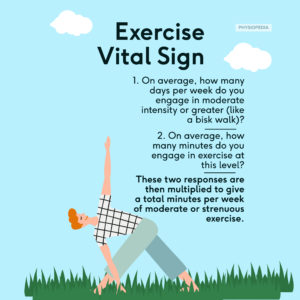Higher rates of physical activity has been shown to have beneficial effects on numerous communicable diseases but can the same be said for COVID-19?
There are several known risk factors for severe COVID-19 infection such as older age, being male, ethnicity and the prescence of obesity, diabetes and cardiovascular disease. It is suspected that physical activity levels also play a role in predicting COVID-19 outcomes however there has yet to be a study which confirms this hypothesis.
It is well known that people who partake in regular physical activity have higher immune activity and lower rates of comorbidities such as obesity and diabetes which we know adversely effect COVID-19 outcomes. Therefore it is reasonable to expect that regular physical activity may mitigate poor COVID outcomes. A new study published in the BMJ set out to clarify this prediction.
Update Your Clinical Covid Knowledge
Methods
This study is a retrospective observational study in which physical activity data in electronic health record in the two years preceding March 2020 was assessed. The study was conducted at Kaiser Permanente Souther California which is a healthcare system which serves around 4.7 million residents in Southern California.
Participants data was used within the study if they were 18 years and older with a positive COVID-19 test or diagnosis between January 1st 2020 and 21st October 2020. Participants had to have at least three outpatient visits with an exercise vital sign (EVS) measure between 19th March 2018 and 19th March 2020 to make sure regular physical activity habits were captured.
The primary outcome measures were hospitalisation, ICU admission and death due to COVID-19. Demographics, BMI, clinical characteristics, service utilisation and co-morbidities were compared using statistical tools.
What is The Exercise Vital Sign?
 The exercise vital sign is a quick and simple way of assessing an individuals physical activity level. It consists of two basic questions:
The exercise vital sign is a quick and simple way of assessing an individuals physical activity level. It consists of two basic questions:
- On average, how many days per week do you engage in moderate intensity or greater (like a bisk walk)?
- On average, how many minutes do you engage in exercise at this level?
These two responses are then multiplied to give a total minutes per week of moderate or strenuous exercise. The outcome measure has been validated for use worldwide in a systematic review published towards the end of 2017.
Clinical Importance & Take Homes
In total 48,880 patients were enrolled onto the trial with a mean age of 47.5 year, 62% were female and the mean BMI was 31.2. Half of the participants had no comorbidities, a fifth has one comorbidity and a third had two or more. Only 6.4% consistently met physical activity guidelines and 14.4% were consistently inactive everyone else was somewhere inbetween.
Among the patients with COVID 4,236 were hospitalised with 1,199 admitted to ICU and sadly 771 died. Overall those who were consistently meeting physical activity guidelines were less likely to be hospitalised, admitted to ICU or die because of COVID when compared to those who were consistently inactive.
“Other than age, pregnancy and history of organ transplant, being consistently inactive conferred the highest odds for hospitalisation with COVID-19.”
Being consistently inactive increased the odds of hospitalisation 2.26 times when compared with consistently meeting physical activity guidelines. Those who participated in some physical activity had 1.89 times greater odds of hospitalisation. Other than age and history of organ transplant, being consistently inactive conferred the highest odds for hospitalisation with COVID-19.
Those who were consistently inactive also had 1.73 times greater odds of admission to ICU and a 2.49 times greater odds of dying as a concequence of COVID-19 than people who regularly participated in physical activity.
This is the first study to confirm that physical activity is an important modifiable risk factor for severe COVID-19 outcomes. Being consistently inactive exceeded the odds of smoking and virtually all other chronic diseases. Furthermore when comparing outcome of those who are consistently inactive to those who are partially active results suggest any amount of activity has benefit.
It is possible that the results of this study underestimate the size of the effect of physical inactivity due to the way the statistical models adjust for several chronic conditions. Either way this study confirms that we should promote physical activity whenever we can during our clinical contact with patients.
